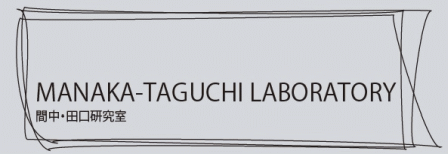
■The Subject and Aims of Research
The research is focused on the following four topics:
| 1. | Development of methods and techniques for evaluating the electrical and optical properties of soft matters (organic thin films, LCs, monolayers) on the basis of dielectrics Physics and Organic monolayer Physics. |
| 2. | Electron transport mechanism of organic materials and its application to electronics. |
| 3. | MDC(Maxwell-Displacement Current)-SHG(Optical Second harmonics Generation) spectroscopy of organic monolayers. |
According to dielectrics physics, dielectric polarization phenomena and electron transport phenomena are key processes to understand the electrical and optical properties of materials, and to use them in electronics. The purpose of the recent research is related to the topics related to bridging these phenomena with specific properties of organic materials, such as shape of organic molecules, flexibility etc. The recent research is also related to the development of detection method (MDC, SHG, surface potential measurement, etc…), the development of theory and experiment to understand organic materials, soft matters, on the basis of physics of liquid crystals and solid state physics, crystals, and study of single electron tunneling behavior in organic thin films and fabrication of organic device elements(Organic FET, SET, LCs). The research is also related to LCs and Biophysics.
1. Development of SHG-MDC Spectroscopy
On account of symmetry breaking, monolayers at the interface has spontaneous polarization and nonlinear polarization. These lead to the generation of MDC and SHG. A new experimental system that can allows us to detect MDC and SHG signal has been developed, and many organic molecules, including LCs, and bio-membranes, have been investigated for the establishment of a new spectroscopic technique.
(e.g., Physical Review E, 67 041711, (2003))

Figure 1:SHG-MDC system and MDC - SHG isotherms.
2. Nanometric dielectrics and nano-interfacial electrostatic phenomena
For the understanding of nanometric interfacial phenomena occurring at the metal-film, film-film interface, surface potential method has been employed in combination with the film preparation method (LB, evaporation, etc.) and a method for the determination of spatial charge distribution and electronic density of states at the interfaces of organic ultrathin films including semiconductors (phthalocyanine, pentacene, Alq3, etc.), insulators (polyethylene, polyimide) etc, have been developed. Based on the experimental results, a new physical models to explain nano-interfacial electrostatic phenomena has been presented. In addition, to detect nano-interfacial electrostatic phenomena by optical methods, the development of experimental method coupled with SHG is now proceeding. These studies will definitely become important in organic thin film applications in electronics.
(e.g., J.Appl.Phys. 92, 6390 (2003), see Figure 2).

Figure 2:Nano-electrostatic phenomena at metal-film interface.
3. Single Electron tunneling across organic monolayers
Based on the successful preparation of nano-meter thickness organic tunneling barriers (polyimide), single electron tunneling across organic monolayer systems with C60, phtalocyanine, rhodamine molecules have been fabricated. The single electron tunneling behavior has been well detected in the I-V characteristics of the fabricated monolayer systems for the first time, and single electron tunneling process including elastic and inelastic tunneling process has been well examined.
( e.g. Nanotechnology and Nano-interface controlled Electronic Devices,
North Holland, Elsevier, Chap.3 p.31(2003), J.Chem.Phys.120, 7725 (2004).)

Figure 3:Single electron tunneling across organic monolayers.
4. Modeling of Surface anchoring energy, and orientational order and control of Liquid crystals by surface monolayers
The generalized surface anchoring energy formula that can cover the Rapini and Papoular model, etc has been successfully derived using spherical harmonic expansion, and twisted nematic effect, voltage controlled-twist effect has been well examined. A unique optical method for the evaluation of orientational orders of liquid crystal molecules has been investigated by coupling the LC evaporation method. Furthermore, focusing on the surface azobenzene layers, molecular synchronization system has been explored and LC cells controlled by the photoisomerization of azobenzene surface layers has been investigated.
Phys.Rev.Lett. 93, 206101 (2004)

Figure 4:Surface energy diagram
Selected Publications and Projects
Books:
1)The Physical Properties of Organic Monolayers, World Scientific, Singapore, 2001.
2)Organic Properties of Organic Monolayer Films in Supramolecular Photosensitive and Electroactive materials,edited by H.S.Nalwa,Academic Press, Chap.11, pp859-906 (2001).
3)Nanotechnology and Nano-interface controlled Electronic Devices, North Holland, Elsevier(2003)).
Research Projects:
Priority Areas Research(A):
Molecular Synchronization for Design of New Materials systems,(1999-2003).
Scientific Research(A):
Electronic properties of flexible nano-interface investigated by MDC-SHG measurement, 2003-2007.
Awards:
(1)1986 The Institute of Electrical Engineers, Best paper award.
(2)1991 Japanese Applied Physics Society award A.
(3)1994 Japanese Materials Resources Yamazaki Award.
(4)2001 The Institute of Electronics Information Communication Engineer, Electronics Society Award.
■Recent Topics
・ Direct observation of the electric field distribution in channel region of FET structure device.
Direct observation of the electric field distribution in channel region of FET structure device.
・ Analysis of organic field effect transistors (OFET) based on Maxwell-Wagner effect
Analysis of organic field effect transistors (OFET) based on Maxwell-Wagner effect
・ Biomembrane on the solid substrate
Biomembrane on the solid substrate
・ Dielectric and Geometrical Properties of Monolayers at the Air-Water Interface
Dielectric and Geometrical Properties of Monolayers at the Air-Water Interface
・ Observation of charge injection and dielectric breakdown by electroluminescence under AC electric field.
Observation of charge injection and dielectric breakdown by electroluminescence under AC electric field.
・ Relaxation dielectric phenomena
Relaxation dielectric phenomena
・ What is the LIQUID CRYSTAL at the interface?
What is the LIQUID CRYSTAL at the interface?
・ Chirality induced by circular polarized light
Chirality induced by circular polarized light

 Email address:
Email address:

